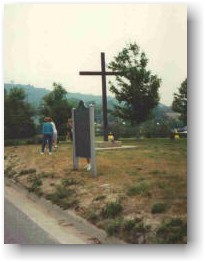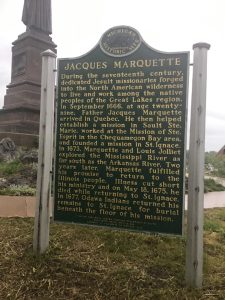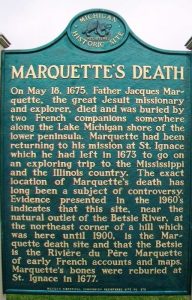The Journey Begins
On May 17, 1673, two unlikely adventurers—Jesuit missionary Father Jacques Marquette and French-Canadian fur trader Louis Joliet—pushed off from St. Ignace in canoes, beginning one of the most significant exploration journeys in North American history. Accompanied by five voyageurs and guided by Indigenous knowledge, their mission was to find and map the mighty river that Native peoples called the Messipi—“the Great River.”
Their journey wasn’t just about maps and discovery. It was about connecting a continent. With little more than determination, their canoes, and guidance from Native tribes, they ventured across what would become Wisconsin and followed the Mississippi River deep into the heart of the continent, reaching as far south as present-day Arkansas before turning back. Along the way, they recorded valuable information about the geography, people, and wildlife of the region—details that would influence future French exploration and colonization.
An Unusual Pair
Marquette, a scholarly Jesuit just shy of 36, and Joliet, a former philosophy student turned fur trader in his late twenties, made an unusual pair. But their combined skills and mutual respect for the Indigenous peoples they encountered made them a successful team. They didn’t “discover” the Mississippi—Native Americans and even earlier Spanish explorers had known of and used the river—but they were the first Europeans to record a navigable path from the Great Lakes to the Gulf of Mexico.
The expedition had far-reaching consequences. It laid the groundwork for a vast network of French trading posts and missions, introduced Christianity to the Upper Midwest, and opened the region to European settlers. It also, unfortunately, began the slow erosion of Native cultures and environments through fur trade exploitation and colonization.
Time to Head Home
After reaching the mouth of the Arkansas River in July, wary of Spanish territory further south, the expedition turned back. By the end of September, they returned north, carrying with them information that would shape the next chapters of North American history. While Marquette’s journal was preserved (though largely forgotten for nearly two centuries), Joliet’s notes were lost in a canoe accident. Thankfully, he gave detailed interviews and maps that helped fill in the gaps.
So today, as we reflect on this 352-year-old adventure, we remember it not just as a moment of exploration—but as a turning point in the story of the Great Lakes and the vast river that defines the middle of our continent.
Pere Marquette’s Death Historical Marker

Located on Main Street, Frankfort – Lat: 44.63082500 / Long: -86.24349100
On May 18, 1675, Father Jacques Marquette, the great Jesuit missionary and explorer, died and was buried by two French companions somewhere along the Lake Michigan shore of the Lower Peninsula. Marquette had been returning to his mission at St. Ignace, which he had left in 1673 to go on an exploring trip to the Mississippi and the Illinois country. The exact location of Marquette’s death has long been a subject of controversy. Evidence presented in the 1960s indicates that this site, near the natural outlet of the Betsie River, at the northeast corner of a hill which was here until 1900, is the Marquette death site and that the Betsie is the Rivière du Père Marquette of early French accounts and maps. Marquette’s bones were reburied at St. Ignace in 1677.
Jacques Marquette Historical Marker

Located at 501 South Front St., Marquette – Lat: 46.53967600/Long: -87.39336400
During the seventeenth century, dedicated Jesuit missionaries forged into the North American wilderness to live and work among the native peoples of the Great Lakes region. In September 1666, at age twenty-nine, Father Jacques Marquette arrived in Quebec. He then helped establish a mission in Sault Ste. Marie, worked at the Mission of Ste. Esprit in the Chequamegon Bay area, and founded a mission in St. Ignace. In 1673 Marquette and Louis Jolliet explored the Mississippi River as far south as the Arkansas River. Two years later Marquette fulfilled his promise to return to the Illinois people. Illness cut short his ministry and on May 18, 1675, he died while returning to St. Ignace. In 1677 Odawa Indians returned his remains to St. Ignace for burial beneath the floor of his mission.
Learn more about the rich history of the Central Upper Peninsula, Western Upper Peninsula or Eastern Upper Peninsula.



